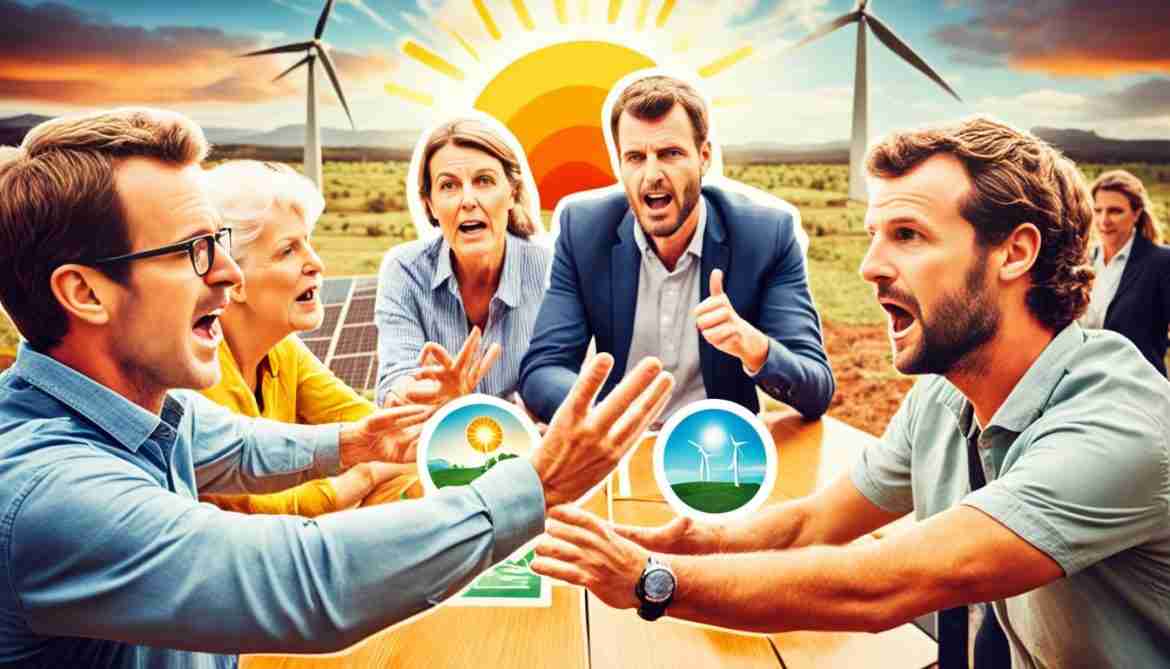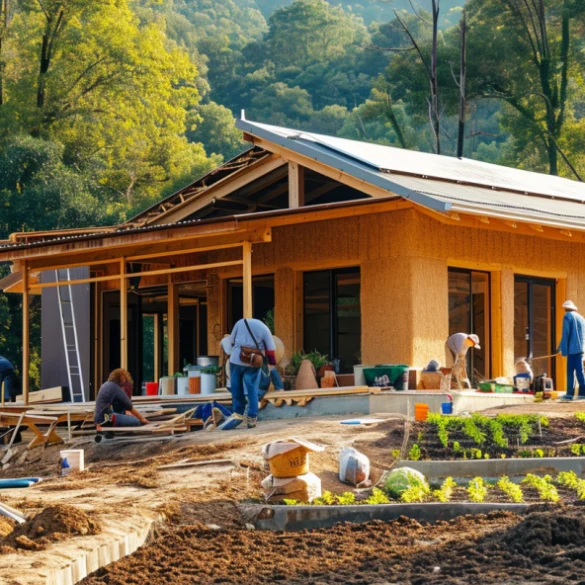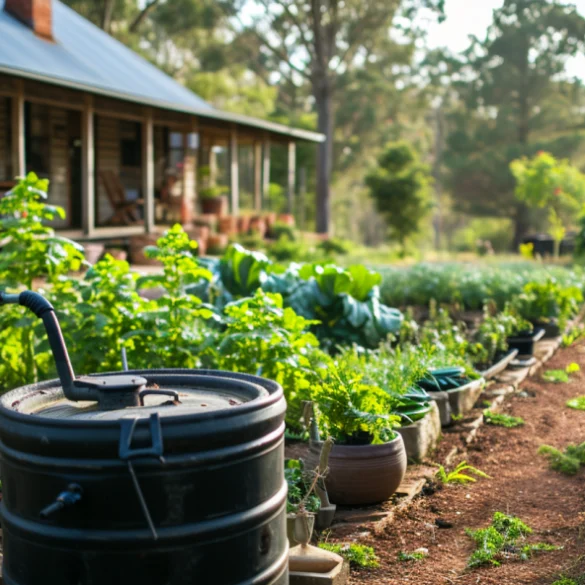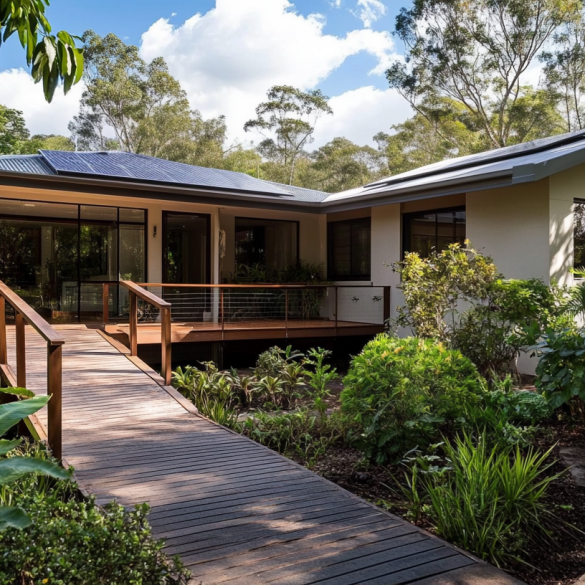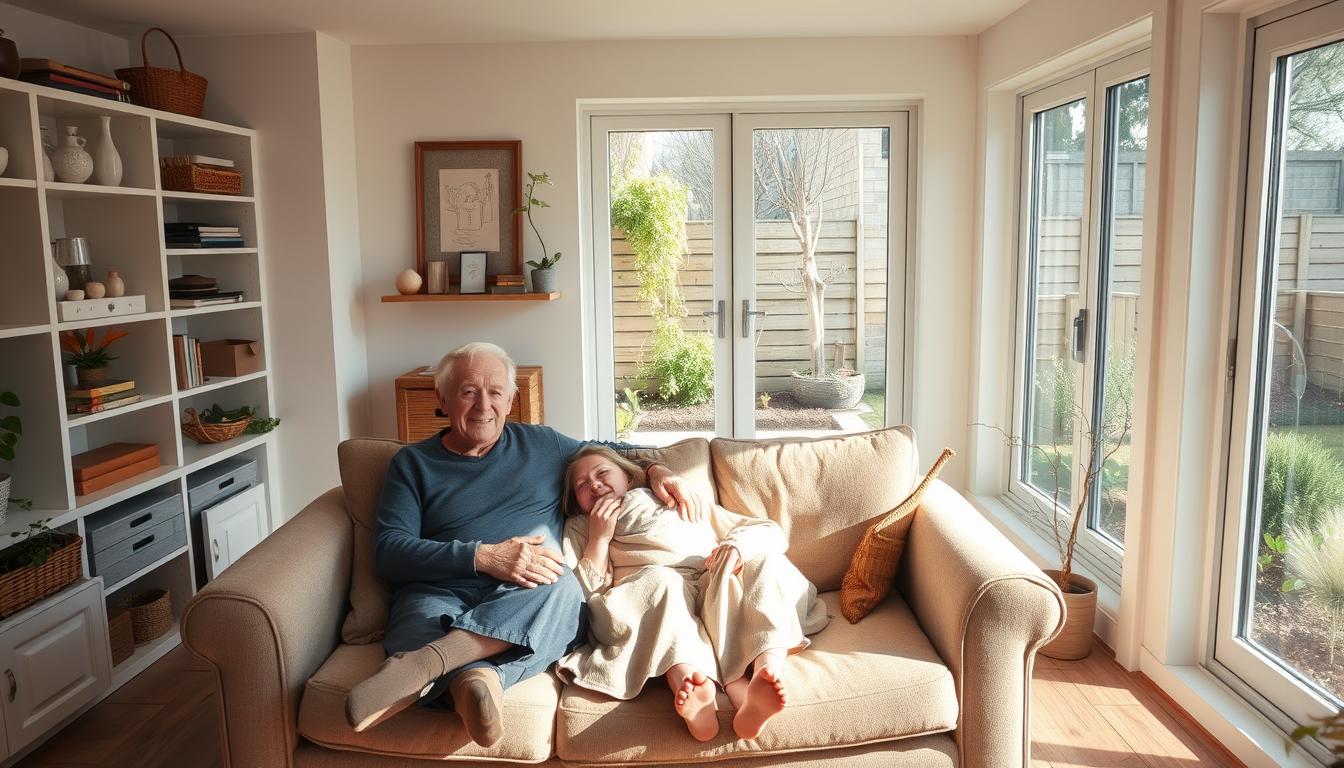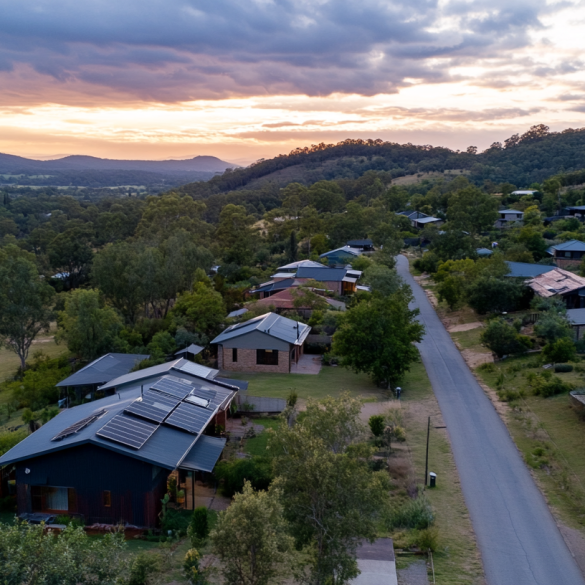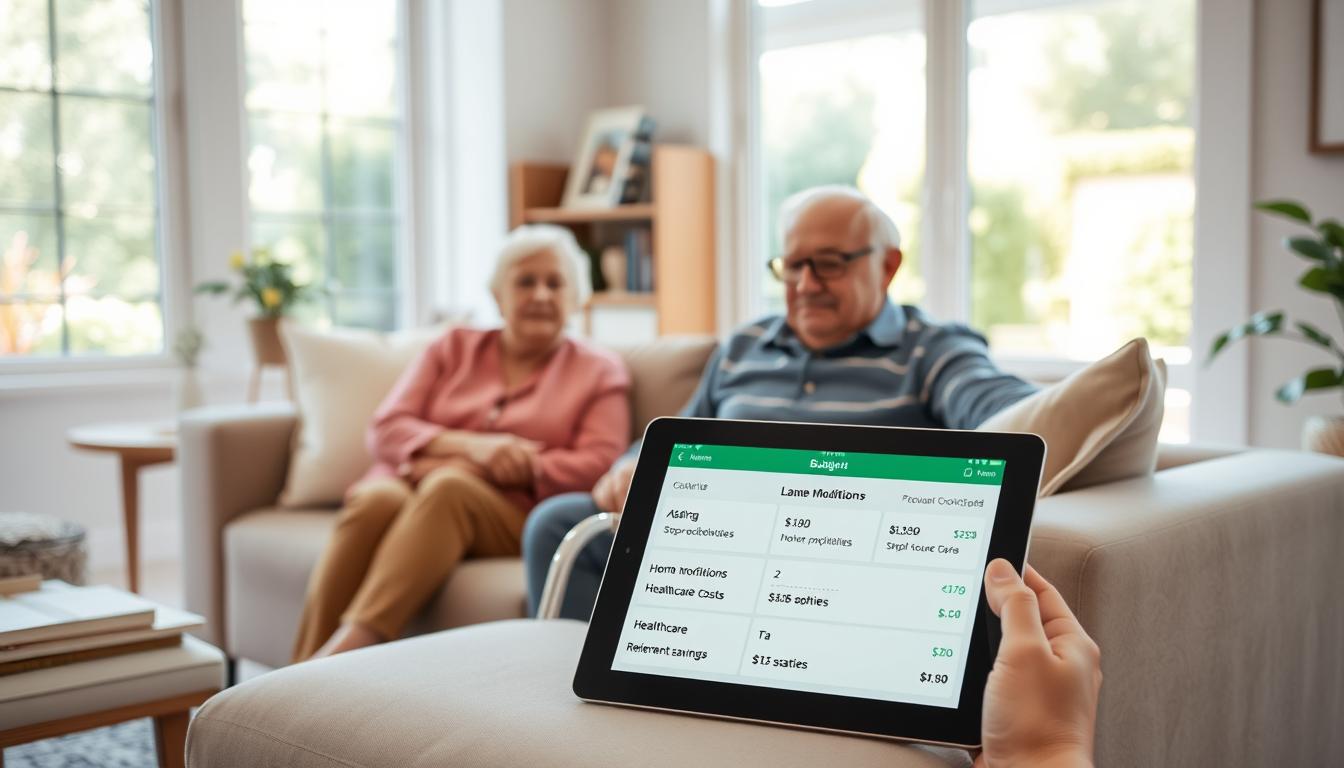Is Australia ready to switch to clean energy and leave fossil fuels behind? With the need to fight climate change and ensure energy security, the talk is all about renewable energy. Using solar, wind, and hydroelectric power would lower our environmental impact. It offers a chance for a more eco-friendly future. Yet, we still wonder about costs, new technology, and policy needs for this big change.
As we look at the renewable energy debate, we must decide its pros and cons. Can renewable energy really keep up with our energy needs and stay affordable? How will green technology shape our future ways of making energy? Let’s dig deep into this important conversation. Let’s find our footing toward a greener, more sustainable, and energy-self-sufficient Australia.
Key Takeaways
- Australia faces a crucial debate on transitioning to renewable energy sources
- Clean energy options like solar, wind, and hydropower can reduce environmental impact
- Economic viability and technological advancements are key considerations
- Policy implications and public perception shape the renewable energy discourse
- Balancing the pros and cons is essential for a successful energy transition
Table of Contents
Introduction to Renewable Energy in Australia
The debate on renewable energy is hot in Australia. We must understand the move to sustainable power. This shift is about more than green choices. It also deals with our safety and finding new ways besides fossils.
The use of sunshine, wind, water, and earth heat can cut our need for other sources. These ways can cut the bad gases we make. So, we help fight climate change. Yet, this change faces its own problems.
The fight over what’s better for our future is key. Pushers of green energy say it’s great for health and making jobs. They believe it’s worth the money and effort. But, not everyone is sold on this. Some worry if green tech can work well or save us money.
Big topics in the green energy talk in Australia include:
- How much do we use green power now and the tech we have
- What laws and help do our leaders give for changing to clean ways
- What do people think about going green?
- Discoveries and changes in the green power world
- How going green can make jobs and affect our money
Looking at these points helps us see both the tough parts and the chances of moving to better energy. The debate on renewable energy is more than picking a source. It’s a deep chat covering many areas like the environment, money, and society.
Choosing renewable energy is key for our future. This choice we make now shapes the world ahead for our kids.
As we talk about the renewable energy debate, keeping an open mind is key. We should listen to others and work on answers for our planet and people. The road ahead might be hard. But with hard work and working together, Australia can show the world how to do it right.
Current State of Renewable Energy in Australia
Australia is moving ahead with renewable energy, using the sun, wind, and water. It’s perfect for green power because it has lots of sunshine and open spaces. The country is looking towards a future where green tech plays a big part in how we get our energy.

Solar Power Generation
Solar power is growing fast in Australia. From homes to big projects, more and more solar is being used. It’s a great option with so much sun and cheaper solar panels. Australia now has over 20 gigawatts of solar power, helping to reduce fossil fuels and saving people money on energy.
Wind Energy Production
Wind power is also a big player in the energy game in Australia. Its windy coastlines are perfect for wind farms. Places like the Macarthur Wind Farm and the Hornsdale Wind Farm are making a lot of clean electricity. These farms also help out by giving jobs to local people and boosting the economy.
“Australia’s renewable energy sector is thriving, with wind and solar power leading the charge. The country’s commitment to sustainable power generation is evident in the rapid growth of renewable energy projects and the increasing share of renewables in the energy mix.” – Clean Energy Council
Hydroelectric Power Contribution
Hydroelectric power has been a key part of Australia’s energy for a long time. Projects like the Snowy Mountains Scheme have been around for many years. They still help a lot today by balancing the power from the sun and wind, which can change a lot.
Apart from solar, wind, and water power, Australia is looking at geothermal and biomass. Even though these are not as common yet, they could help Australia make even more clean energy. This way, the country can use a mix of ways to make green power.
| Renewable Energy Source | Installed Capacity (MW) | Percentage of Total Electricity Generation |
|---|---|---|
| Solar Power | 20,000+ | 9.9% |
| Wind Energy | 8,000+ | 8.5% |
| Hydroelectric Power | 7,000+ | 5.4% |
Australia is doing a lot in the green power journey. More solar, wind and water energy show the country’s serious about going green. But there are still some problems to solve, like cost and how to make sure the energy supply is always there.
To improve with renewable energy, Australia needs help from the government, new tech, and people’s support. By working together and using the best green technology, Australia can move even faster towards a future with less pollution.
Fossil Fuels vs. Renewables: The Ongoing Debate
The fight between fossil fuels and renewable energy is everywhere. In Australia and all over the globe, there’s a big need to tackle climate change. Part of this is choosing between old-school fossil fuels and new, green options.
Environmental Impact Considerations
Fossil fuels, like coal and oil, are bad for the environment. They spit out a lot of greenhouse gases, causing climate change. They also make our air and water dirty, harm wildlife, and destroy natural homes.
In comparison, renewable energy from the sun, wind, and water is much cleaner. It doesn’t pollute like fossil fuels and doesn’t hurt our climate. Choosing renewable energy helps Australia fight against climate change and keeps our plants and animals safe for the future.
Economic Viability Concerns
People still argue about whether it’s smart to switch to renewable energy. Those for fossil fuels say they are cheaper and more dependable. They mention the big existing setup and lower first costs.
But, those for renewable energy say that it pays off to go green. They look at the future savings and benefits. And, as green technology gets better, it becomes more affordable. It also creates new jobs and economic chances.
| Energy Source | Environmental Impact | Economic Considerations |
|---|---|---|
| Fossil Fuels | High greenhouse gas emissions, air and water pollution, habitat destruction | Established infrastructure, lower upfront costs |
| Renewable Energy | Low environmental footprint, reduced emissions, preservation of ecosystems | Decreasing implementation costs, job creation potential, long-term cost-effectiveness |
Deciding on renewable energy needs a good look at both the costs and benefits. Australia has to really think. By carefully looking at fossil fuel and green energy, we can make a smart choice. This can lead us to a future that’s good for everyone and our planet.
Government Policies and Initiatives for Renewable Energy
The big discussion about renewable energy is happening all over the world. In Australia, the government is very involved in this talk. They make rules, give support, and get things done. They try to make sure our energy future is good for the planet and people, while also making sense for the economy.
The government in Australia has put in place many plans to help more clean energy happen. These plans are here to make investing in clean energy a good choice, push for new tech, and get everyone to think and act in green ways.

One such plan is the Renewable Energy Target (RET). It aims high, wanting a lot of our power to come from green sources. Thanks to the RET, solar, wind, and water power has grown a lot. There are also sweet deals, like money help and less tax, for those who join in on clean, green projects.
But, making our energy future green is tough. Some don’t like the changes needed, like those into green energy. Big fossil fuel companies and a few people are sometimes against the changes. It’s not easy for the government to make everyone happy while moving towards a better, greener way.
| Policy | Description | Impact |
|---|---|---|
| Renewable Energy Target (RET) | Sets targets for the proportion of electricity generated from renewable sources | Drives the expansion of solar, wind, and hydro power |
| Financial Incentives | Grants and tax credits for renewable energy projects and adoption | Encourages investment in clean energy infrastructure and solutions |
| Carbon Pricing Mechanism | Puts a price on carbon emissions to incentivize low-carbon technologies | Promotes the transition to renewable energy sources |
Yet, the Australian government stays firm in its push for more renewable energy. They talk with everyone, gather facts, and try to make the best choices. Their goal is a future where we have clean, abundant energy, and everyone wins.
“The renewable energy the great debate is not just about environmental sustainability; it’s about creating a resilient, affordable, and secure energy system that benefits all Australians. We must work together to find solutions that balance our economic, social, and environmental objectives.” – Minister for Energy and Emissions Reduction, Angus Taylor
The role of the Australian government in steering renewable energy is key. By making strong rules, supporting new ideas, and keeping the energy talk going, Australia hopes to lead in going green. Together, we can drive towards an energy future that’s great for us and our planet.
Public Perception and Opinion on Renewable Energy
The talk about renewables is very important in Australia’s green journey. Australians have lots of different thoughts and feelings about renewable energy. This shapes the way our energy world is changing.
Support for Clean Energy Transition
Many Aussies back the move to clean energy. They see how good it is for the earth. Using new green tech is key to fighting climate change. Most people here like the idea of switching to green energy and leaving gas and oil behind.
Here are some reasons for this support:
- Fossil fuels harm the environment and our health
- Green tech is becoming more affordable and easy to get
- We want to be more in control of our energy
- It could help create jobs and lower our bills
“The move to green power isn’t just about the planet. It’s a chance for Australia to be a green leader. This will help make a brighter future for all.” – Sarah Thompson, Sustainable Home Magazine
Concerns and Skepticism
However, not everyone is excited about green energy. Some worry if it can really power everything we need. They also think it might be too expensive to switch over.
Here are the main worries:
- Can we count on green energy all the time?
- Will changing hurt our wallets?
- How much will it cost to make the switch?
- Will people lose jobs when we stop using gas and oil?
- Is there enough green power to meet our needs?
These worries have sparked many discussions about the right pace of change. Talking about and addressing these worries is vital. It helps build trust and support for going green.
| Public Perception | Percentage |
|---|---|
| Support renewable energy adoption | 65% |
| Believe renewable energy is important for combating climate change | 72% |
| Express concerns about reliability and cost | 28% |
As we debate the future of green energy, we must make sure everyone is well-informed. It’s important to hear and address people’s worries. Showing the big wins of this green move is also key. By talking and working together, we can create a future that’s clean and everyone is happy with.
Technological Advancements in Renewable Energy
The great debate on renewable energy is growing thanks to new tech. These advancements make solar energy, wind power, and energy storage better. They are now more efficient, reliable, and cheaper.
Improvements in Solar Panel Efficiency
Solar energy is making big steps with better solar panels. These new panels change more sunlight into power. Now, solar panels are smaller, less expensive, and useful in more places.

Innovations in Wind Turbine Design
Wind power is also getting a boost from new designs in turbines. Today’s wind turbines are taller and have larger blades. They also use advanced controls to work better. This progress means wind farms make more energy and can compete with fuels like oil.
Notable advancements in wind turbine technology include:
- Lightweight materials for blades and towers
- Improved aerodynamics for enhanced efficiency
- Smart control systems for optimal power generation
- Offshore wind turbines for harnessing strong ocean winds
Advancements in Energy Storage Solutions
Storing energy from the sun and wind is a big task. But, new energy storage tech is helping. Batteries are getting better, lasting longer, and cost less. This helps us save extra renewable energy for rainy days.
New energy storage tech includes:
| Technology | Description | Benefits |
|---|---|---|
| Lithium-ion batteries | High energy density and long cycle life | Compact, efficient, and suitable for various applications |
| Flow batteries | Scalable and long-duration energy storage | Ideal for utility-scale storage and grid balancing |
| Compressed air energy storage | Storing energy as compressed air in underground caverns | Large-scale, long-duration storage with low environmental impact |
These new ways to store energy make renewable sources more steady. This helps their argument in the renewable energy the great debate.
As tech keeps improving, renewable energy is moving ahead. These developments are key to a cleaner, greener future. They cut costs, boost efficiency, and make renewable energy better than fossil fuels.
Economic Implications of Transitioning to Renewable Energy
Australia is talking a lot about renewable energy. It’s important to think about the economic effects of moving to cleaner sources of power. The start-up costs might look scary. But, the long-term pluses, like saving money and making green jobs, are very good.
Starting to use clean energy can be hard at first. You need to put money into building the new power stuff. But, technology is getting better and things are getting cheaper. Now, studies say solar and wind power can be just as cheap as regular fuels in many places, including Australia.
Changing to clean power also offers lots of new jobs. With more people wanting clean energy, we’ll need more workers who know about it. These green jobs can help grow the economy and give Aussies new work in many fields.
“Investing in renewable energy not only helps mitigate the effects of climate change but also creates a more sustainable and resilient economy for future generations.” – Sustainable Home Magazine
Using clean power is good not only for the wallet but also for the future. When we are free from using fuels that change prices and can run out, we are safer. Solar and wind always give us power, without worrying about costs going up or stops in the supply.
| Energy Source | Levelized Cost of Electricity (LCOE) in Australia (AUD/MWh) |
|---|---|
| Solar PV | $50-$80 |
| Wind | $60-$90 |
| Coal | $70-$120 |
| Gas | $80-$130 |
The table shows that solar and wind power are starting to be a good money deal against the old fossil fuels. This will only get better as we build more and make technology advances.
In the end, we must keep talking about the renewable energy the great debate. But we also need to see the economic impact of going green. Facing the hard parts, using the savings of clean power, and making more green jobs can make Australia a leading country in the world. We’re moving towards a brighter, cleaner, and richer future.
Challenges and Obstacles in Adopting Renewable Energy
As Australia moves forward with the renewable energy the great debate, it’s vital to face the challenges head-on. These include the need for new infrastructure and worries about how reliable renewable sources are. Australia must work to solve these to switch to cleaner, more sustainable energy.
Infrastructure Requirements
Getting renewable energy going needs big changes in how things are built. Solar panels and wind turbines need a lot of new construction work. This work often sparks debates and concerns in local areas. People worry about how it looks and if it harms the environment.

Also, adding renewable energy to the current system is hard. The grid needs to be updated to handle power from the wind and sun. Making the grid smarter and adding new storage can help keep the power steady.
Intermittency and Reliability Issues
Solar and wind power faces big issues with being reliable. They only make power when the sun shines or the wind blows. This can make it hard to keep up with how much power is needed every day.
Storing extra power in batteries can help. These batteries can save power for when it’s needed most. But making enough of them and keeping the cost down is still being worked on.
Making sure the power plants last a long time is also important. Solar panels and wind turbines need care and might not last forever. Thinking about how to pay for fixes over time is a big part of planning for these plants.
Handling these challenges needs many efforts. Keep working on new tech and rules is key. Also, making sure people know what’s happening helps a lot. Doing this can lead to a good future with renewable energy, even with the problems now.
Renewable Energy Success Stories in Australia
The talk about renewable energy is making big waves. It’s important to share the great stories. They show us how green power can change everything. In Australia, cool innovations are changing the energy world in a big way.
The Hornsdale Power Reserve in South Australia is super cool. It’s the biggest battery using lithium-ion in the world. Made by Tesla and Neoen, it stores solar power. This project is a game-changer.
It can give power to 30,000 homes for an hour. This helps during peak times when lots of power is needed. It’s made the power grid more reliable, reduced blackouts, and cut costs for people.
The Coopers Gap Wind Farm in Queensland is also making a difference. It’s Australia’s biggest wind farm. With 123 turbines, it can power around 264,000 homes every year. It’s not just about clean energy. It also gives jobs and helps the local economy.
Then we have the Broken Hill Solar Plant in New South Wales. It can power 17,000 homes each year. AGL Energy made this 53-megawatt solar farm. It’s cutting the use of fossil fuels. It’s showing the way for more solar power in the region.
“The success of these renewable energy projects demonstrates that sustainable power generation is not only viable but also essential for Australia’s future energy security and economic growth.” – Sarah Thompson, Renewable Energy Expert
Here’s a table showing some of Australia’s top renewable energy projects:
| Project Name | Location | Technology | Capacity |
|---|---|---|---|
| Hornsdale Power Reserve | South Australia | Lithium-ion Battery | 100 MW |
| Coopers Gap Wind Farm | Queensland | Wind Energy | 453 MW |
| Broken Hill Solar Plant | New South Wales | Solar Power | 53 MW |
| Degrussa Solar Power Project | Western Australia | Solar Power & Battery Storage | 10.6 MW |
These projects are changing the game for renewable energy. They show us it works. And they remind us that we all need to support and push for these changes. Let’s learn from these stories. And let’s make sure more of these projects happen all over Australia.
Renewable Energy the Great Debate
Australia is dealing with how to switch to cleaner energy. The talk about renewable energy is hot. People supporting green energy talk about the good it does for the earth. They think it will help fight climate change. They say using renewable energy is key to using less fossil fuel and keeping the earth healthy.
But, some folks worry about the money and if we can depend on it. They say it costs more to start renewable energy. Also, the sun and wind don’t always work, which can be a problem. They think sticking to fossil fuels would be cheaper and safer for Australia’s energy needs.
The talk on renewables is getting people fired up. Those in favor talk about how it helps cut down on air pollution. It could make new jobs in the green energy sector. And, it’s a chance for Australia to show off new clean energy ideas.
But, some worry about what might happen if we change too fast. They fear it could make energy more expensive. Plus, it might mean some people lose jobs in the old energy jobs. They wonder if rushing with fossil fuel would be bad for the economy and job safety.
“The debate surrounding renewable energy is complex and multifaceted, with valid arguments on both sides. As a nation, we must carefully consider the pros and cons of different energy sources and find a balanced approach that prioritizes both environmental sustainability and economic stability.”
The renewable energy debate is still growing. To move ahead, everyone needs to talk. Leaders, experts, and everyday people should share ideas. By listening to many views and being open to new things, Australia can shape a bright future for energy.
Future Projections and Scenarios for Renewable Energy in Australia
Australia is looking towards a future full of renewable energy. We are considering many ideas for what our energy might look like. With new policies and technologies, we are moving towards clean power quickly. This is great news for our planet.
Experts say we will use way more renewable energy by 2050. In fact, up to 80% of our electricity might come from green sources. This would be a huge change from our current ways.
Potential Renewable Energy Mix
Our future power might come from many sources. This includes the sun, wind, and water. Even new ways like geothermal and bioenergy will help.
| Renewable Energy Source | Projected Share in 2050 |
|---|---|
| Solar Power | 40% |
| Wind Energy | 30% |
| Hydroelectric Power | 15% |
| Other Renewables (Geothermal, Bioenergy, etc.) | 15% |
This big mix of renewable energy will cut down on pollution. It will make our energy more secure, too. We won’t need to depend on other countries for our power as much.
Projected Growth and Adoption Rates
Renewable energy is getting more popular in Australia. Cost is going down, and the government is helping. People are also realizing the importance of green power. So, we are using more and more of it.
- By 2030, half of our electricity might be from renewables.
- Solar power is expected to triple by 2040, to over 50 gigawatts.
- Wind power could increase by five times by 2050.
These plans show Australia could lead the way in going green. The conversation about renewable energy is getting louder. It’s clear we are heading towards a future with much cleaner energy.
Farmers’ Perspective on Renewable Energy Projects
There’s a big talk about renewable energy the great debate. It’s important to hear from farmers. They are key to Australia’s economy. Their thoughts on green tech and renewable projects matter a lot in the public discourse on renewables.
Farmers like the idea of renewable energy. It could lower their costs and bring in extra money. But, they worry about how it affects their land and farming. The mix of views shows we need to look at both sides fairly.
Farmers are worried about losing land to solar and wind farms. These big projects need a lot of space. This can be a problem for growing food. They want to make sure these projects are put in places that won’t hurt farming much.
Farmers also worry about how the energy set up might change their farming ways. Things like windmills or solar panels can get in the way of farming jobs. They think it’s vital to talk things over with the energy folks. Together, they can figure out ways to have both farming and renewable energy work well.
“I’m a farmer who cares about our earth and using less energy. But, it’s really important that these new ways don’t harm our ability to grow food and live. We all need to find a way that helps us all.” – Sarah Thompson, a farmer from New South Wales.
However, farmers also see new chances in renewable energy. These projects can make jobs and help local economies. They can earn money through land leases and by owning part of the project. By involving farmers from the start, we can make the change to clean energy better for everyone.
To help farmers and make things work better, we should:
- Talk with farmers a lot and get their advice
- Make clear rules about where to put renewable energy projects on farm lands
- Learn how to keep the farming work going while having renewable energy around
- Think up new ways, like using the same land for farming and making energy
- Give farmers reasons and help to use more renewable energy on their farms
The talk about renewable energy the great debate is far from over. It’s key to pay attention to the farmers’ worries. By all working together, we can find answers that help farming and the move to clean energy. This way, we can build a brighter future for all in Australia.
Fire Hazards and Safety Concerns with Renewable Energy Infrastructure
Australia is making big moves towards using more green energy. But, as we do, it’s vital to think about fire risks and how to stay safe. Green energy is awesome for the environment, yet we must also look at any dangers. This way, we keep everyone safe and the power running well.
When we talk about solar and wind farms, there’s a worry about fires. Things like inverters and batteries can start fires if they are not looked after. And if there’s an issue, things like lubricants and plastics can make fires spread more.
Fire Prevention Measures
There are ways we can keep these systems safe from fires. For example,
- We should check the electrical parts often.
- Build the systems with materials that don’t easily catch fire.
- Add fire fighting equipment like sprinklers or special systems.
- Make sure everything has enough cool air and space so it doesn’t get too hot.
- Always follow very strict safety rules when setting it all up and using it.
Bushfire Hazard for Equipment
In Australia, bushfires are a big worry for green energy gear, especially out in the country. Hot, dry weather and nearby plants can easily start fires. This can hurt solar panels and wind turbines, stopping them from working and causing safety problems.
To protect these systems from bushfires, we can do several things:
- Make sure there’s space around the green energy parts for safety.
- Use special materials that don’t burn easily.
- Put in systems that can alert us and help spot early signs of bushfires.
- Work closely with the fire department to make plans for what to do in an emergency.
Emergency Response Plans
Having a good plan for what to do in an emergency is really important. This keeps everyone safe and the equipment protected. A good emergency plan should have:
- Rules for when and how to leave quickly and where to meet up safely.
- Teaching people how to respond to a fire and keep calm.
- Ways to reach out to the emergency teams and work together.
- Practicing through drills and tests to make sure everyone knows what to do.
- Having the right tools and people ready to fight the fire if it’s safe to do so.
| Renewable Energy Source | Potential Fire Hazards | Preventive Measures |
|---|---|---|
| Solar Panels | Electrical faults, overheating | Regular maintenance, fire-resistant materials |
| Wind Turbines | Mechanical failures, lightning strikes | Proper grounding, fire suppression systems |
| Battery Storage Systems | Thermal runaway, short circuits | Temperature monitoring, ventilation, fire containment |
In the push for more renewable energy in Australia, we must not overlook safety from fires. By putting in strong measures to prevent fires, reducing bushfire risks, and having good emergency plans, these green energy systems can work safely. This way, we protect our investments and earn trust in the future of green power in Australia.
Renewable Energy and Energy Independence
Australia is tackling big energy policy debates. The focus now is on how renewable energy can help reach energy independence. This is key because of worries over the harms of fossil fuels.
Using solar, wind, and hydro power can lower Australia’s need for other countries’ fossil fuels. This makes the country more independent in energy. Plus, it uses Australia’s own nature gifts and cuts risks from world energy changes.
But, reaching energy independence with renewable power faces challenges. Setting up this new system needs big money for new buildings, good ways to store energy, and handling energy ups and downs. These tasks start a big renewable energy the great debate.
“Achieving energy independence is not just about securing our energy supply; it’s about taking control of our energy future and creating a more sustainable, resilient, and prosperous Australia for generations to come.” – Sarah Thompson, Director of Sustainable Home Magazine
Yet, Australia still aims hard for energy independence with green energy. Less need for fossil fuels from abroad helps steady energy prices and makes new green jobs. Also, it’s a big help in fighting climate change worldwide.
| Benefits of Renewable Energy for Energy Independence | Challenges to Overcome |
|---|---|
| Reduced reliance on imported fossil fuels | Significant infrastructure investments required |
| Stabilization of energy prices | Development of effective storage solutions |
| Creation of new jobs in the green energy sector | Management of intermittent energy supply |
| Contribution to global efforts to combat climate change | Overcoming public perception and resistance to change |
The renewable energy the great debate is not over. Everyone must talk and find answers that keep energy security, energy independence, and the planet safe. With teamwork, Australia can beat the energy transition challenges and lead the way in clean, strong energy use worldwide.
International Comparisons and Lessons Learned
As we talk about renewable energy, it’s key to look at other countries. They can teach us a lot. Looking at what has worked and what hasn’t in other places helps us know what to do here. We can use their stories to make our energy better and greener.
Renewable Energy Policies in Other Countries
Countries all over are making big plans to use more clean energy. Germany started early and set a great example with its Energiewende. This plan includes things like getting rid of nuclear power and boosting renewable energy shares.
Denmark, Spain, and China are also doing a lot. They have strong plans for how much renewable energy they will use. They support companies that create green technology. Their economy and job market are doing well because of it.
Adapting Best Practices to the Australian Context
Learning from other countries is good, but Australia is unique. We have to pick the lessons that fit us best. This means looking at what others did and making it work for our home.
One big thing is to keep policies the same for a long time. This helps investors feel sure about putting money into green projects. Making clear and big goals is also important. It keeps everyone moving towards the same green future.
When it comes to energy, making our grid stable and able to store energy is crucial. We should copy what’s worked in other places. This will help us go green smoothly.
| Country | Renewable Energy Policy | Key Lessons for Australia |
|---|---|---|
| Germany | Energiewende (energy transition) policy framework, including feed-in tariffs and investment incentives | Comprehensive approach, long-term policy stability, gradual phase-out of nuclear power |
| Denmark | Ambitious renewable energy targets, support mechanisms for green technology innovations | Importance of clear targets, sustained support for renewable energy sector |
| China | Renewable energy policies driving growth in solar and wind power sectors | Potential for renewable energy to stimulate economic development and job creation |
We can learn a lot from the world and make Australia’s energy even better. By using smart energy plans and supporting new green tech, we can lead in a green future. Let’s make our energy story one that helps our planet.
The Role of Consumers in Driving Renewable Energy Adoption
Consumers are vital in the move to clean energy. They help shape Australia’s green future. By choosing wisely and backing eco-friendly actions, everyone can influence the energy world. This leads to more renewable energy and less fossil fuel use.
Choosing green energy plans makes a big difference. These plans use solar, wind, or water power. It tells energy companies what we like, and they make more clean energy. So, by picking these plans, we help the planet.
Buying energy-saving items matters too. Things like solar panels or electric cars help a lot. They cut down on pollution and make the green market grow. This pushes companies to create better eco products and drop their prices.
“Consumers have the power to shape the future of energy through their choices and actions. By supporting renewable energy and adopting sustainable practices, we can accelerate the transition to a cleaner, greener future for Australia.” – Sarah Thompson, Sustainable Living Expert
Talking about green issues and pushing for good laws also helps. By sharing our views at meetings or online, we can influence policy. Governments often listen more when many people ask for green changes.
Learning and spreading the word about clean living is also key. Telling others about the good of going green helps everyone. It clears up wrong ideas and makes more folks want to use green solutions. Having a smart and active public is key in helping our planet.
| Consumer Action | Impact on Renewable Energy Adoption |
|---|---|
| Choosing renewable energy providers | Creates demand for clean energy and encourages investment in renewable infrastructure |
| Prioritizing energy-efficient products | Stimulates market demand for green technology advancements and promotes innovation |
| Engaging in public discourse and advocacy | Influences policy decisions and pushes for supportive measures for renewable energy |
| Educating and raising awareness | Builds public support, dispels myths, and fosters a culture of sustainability |
To sum up, consumers make a big impact in Australia’s shift to renewables. By choosing well, speaking up, and teaching others, we can speed up the green change. Everyone’s actions are vital in the renewable energy the great debate.
Conclusion
Australia is in the middle of a big talk about renewable energy. It’s pretty clear now that we really need to move to clean energy. This is because using fossil fuels is bad for the earth and not secure. But, the future looks bright as we move towards renewable sources.
To switch to renewable energy, everyone has to work together. This includes the government, companies, and us, the people. If we use new technology, show we’re on board, and set smart rules, we can clean up our act. And, this change brings not just a healthier earth but also more jobs and money, plus we get to be our own energy bosses.
It’s key to understand the part renewable energy plays in Australia’s tomorrow. Staying educated and involved in this talk is really important. Check out Sustainable Home Magazine for tips and info. By choosing wisely and backing renewable energy, we can help make a greener future for Australia and the whole planet.
FAQ
What are the main sources of renewable energy in Australia?
Australia mainly uses solar power, wind energy, and more for renewable energy. These sources are better for the planet than traditional fuels. They are becoming more popular in Australia’s energy plans.
Why is there an ongoing debate about fossil fuels vs. renewables?
People talk a lot about which is better – fossil fuels or renewable energy. They look at how each affects the earth, the economy, and our energy needs. While renewables are good for the planet, some worry about the cost and if they can keep up with our needs.
How do government policies support the adoption of renewable energy in Australia?
The government in Australia does a lot to help people use more renewable energy. They set goals for using renewable energy, give out money to help, and make rules that make it easier to invest in green energy.
What is the public perception of renewable energy in Australia?
Many Australians like the idea of using clean, renewable energy. But some worry about how much it costs and if it can power everything we need. They also think about how building green projects might affect their local area.
How have technological advancements influenced the renewable energy sector?
New technology has really helped renewable energy grow. Better solar panels, wind turbines, and ways to store energy have made green power more reliable and affordable.
What are the economic implications of transitioning to renewable energy?
Switching to renewable energy costs a lot at first. But it pays off by using less fossil fuel, creating new jobs, and saving people money in the long run.
What are some of the challenges faced in adopting renewable energy?
There are some big hurdles in moving to renewable energy. Building new power infrastructure, dealing with power coming and going with the wind and sun, and finding good ways to store energy are some challenges.
How can renewable energy contribute to Australia’s energy independence?
With more renewable energy, Australia can rely less on outside sources for power. This makes the local power supply more stable and prices more predictable, less affected by the global market.
What role do consumers play in driving the adoption of renewable energy?
Consumers really matter when we talk about switching to renewable energy. People can choose clean power, support green projects, and use energy smarter. This pushes for more renewable energy and helps the planet.
Source Links
- https://www.devdiscourse.com/article/education/2948832-do-girls-excel-more-in-single-sex-schools-uk-study-sparks-debate
- https://www.espncricinfo.com/story/can-t20-world-cup-2024-inspire-a-glenn-maxwell-revival-after-horror-ipl-1435088
- https://www.skynews.com.au/australia-news/politics/anthony-albanese-marks-twoyear-anniversary-with-pitch-for-voters-to-back-labor-reject-oppositions-fear-and-division/news-story/dcc26040e62e2ce8d9939b0aecba566a

